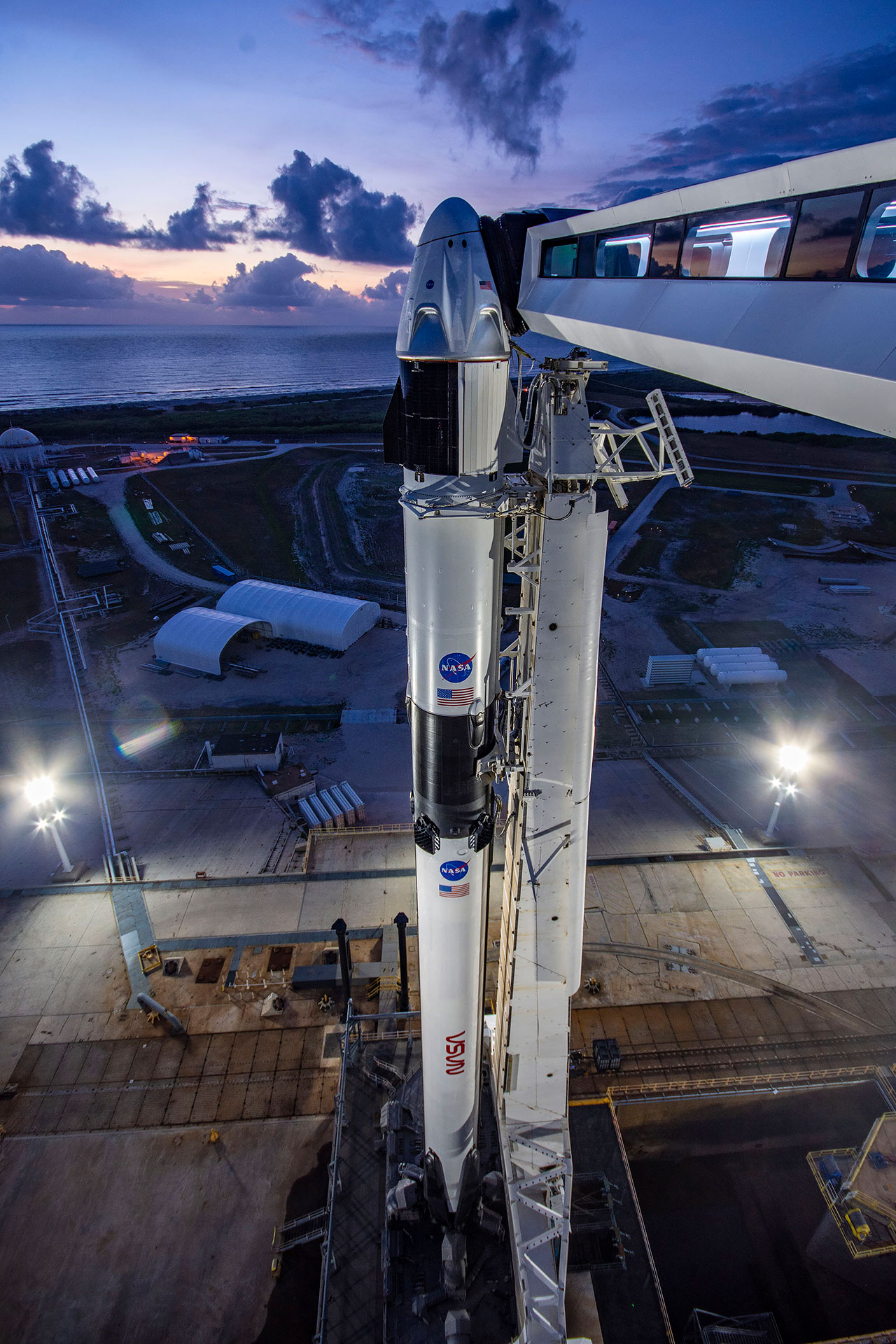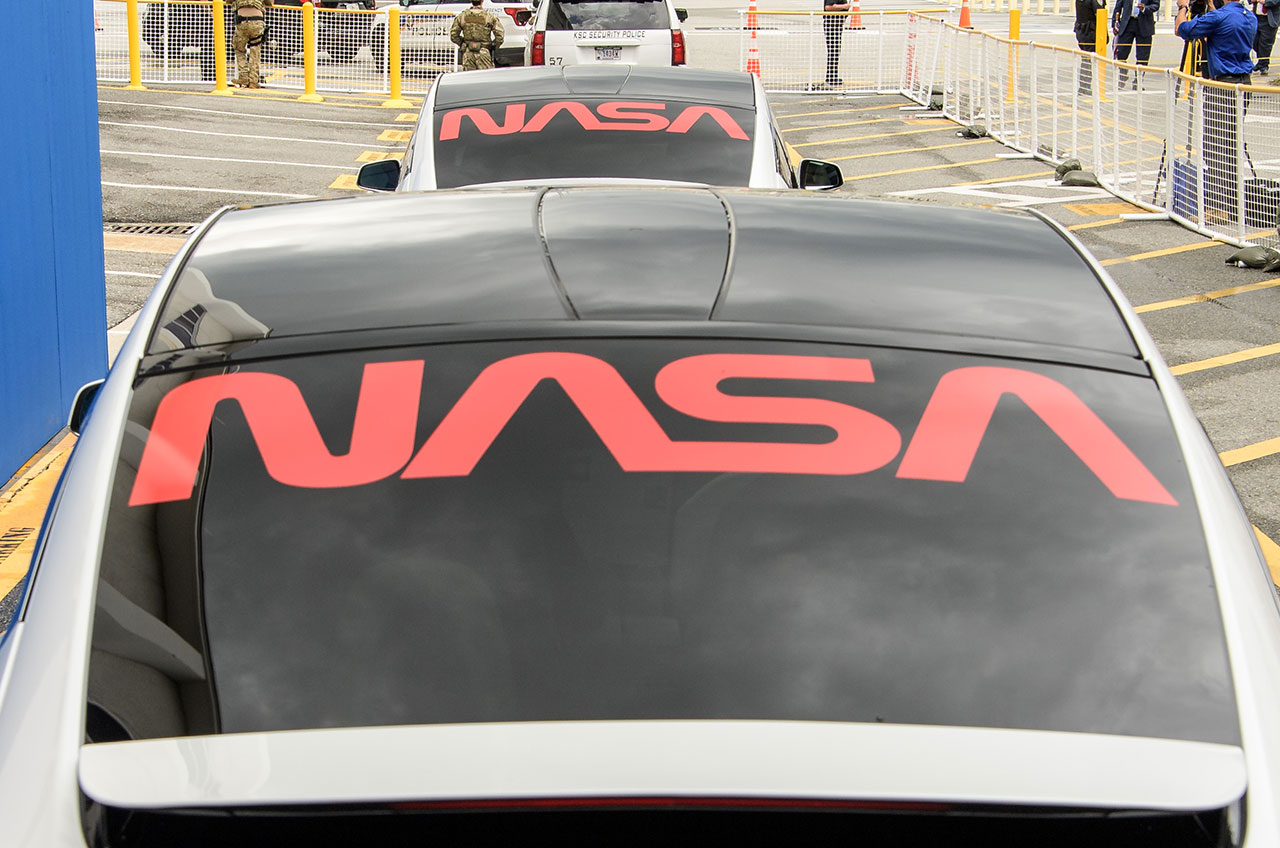NASA marks new era of spaceflight with resurgence of 'worm' logo
What began as a single instance on the side of a rocket has now grown into a full infestation. The "worm," NASA's former logo that was retired 30 years ago, has taken over the first mission to fly astronauts to orbit from a U.S. launchpad in nearly a decade.
The worm, as the 1970s NASA logotype is affectionately known, has gone from in recent years being restricted to use on t-shirts and souvenirs to now adorning almost every prominent surface associated with SpaceX's Demo-2 mission, the first flight of NASA astronauts from a U.S. launchpad since the retirement of the space shuttle in 2011.
First added to SpaceX's Falcon 9 as the rocket was being prepared to launch Bob Behnken and Doug Hurley to the International Space Station, the worm has since wiggled its way across the mission's other equipment and support structures at NASA's Kennedy Space Center in Florida.
Related: SpaceX's historic Demo-2 test flight: full coverage

The logo, which is distinguished from NASA's circular insignia (the "meatball") by its simple, stylized lettering, was then added in decal form to the back window of SpaceX's Tesla Model X and as a backdrop where the crew boards the car outside of NASA's Operations and Checkout building. At Launch Complex 39A, the worm adorns the wall of the gantry level that the astronauts follow to reach their SpaceX Crew Dragon spacecraft.
Even Behnken and Hurley's SpaceX spacesuits have the worm embroidered front and center on their chests.
"The NASA style guide is very clear: the worm no longer exists. But I write the style guide. So I made a determination for this particular mission: on this particular day, we are going to bring back the worm. And we did," NASA Administrator Jim Bridenstine said at a prelaunch press briefing this week, as he sat below a projection of the worm logo.
Breaking space news, the latest updates on rocket launches, skywatching events and more!
The space agency's original style guide, the NASA Graphics Standards Manual, was written in 1976 by the logo's designers, Bruce Blackburn and Richard Danne.
"I think NASA realizes they have two marks, so to speak, but somehow they can be made to co-exist," said Danne in a recent NASA interview.

Created in 1975, the worm was first launched into space with astronauts on the joint U.S. and Russian Apollo-Soyuz Test Project. It emblazoned the wings of NASA's space shuttle orbiters and was applied to the exterior of the Hubble Space Telescope. Then in 1992, it was unceremoniously retired by the then-head of NASA in favor of restoring the Apollo-era meatball as the agency's sole insignia.
The worm remained dormant for two decades until a new generation embraced it as retro cool.
"When they started producing apparel [with it] a couple of years ago, they found out how young people in particular really liked this program," said Danne. "And so they have allowed it to, kind of, come back to life on its own."
"I'd love to say it was my idea," said Bridenstine, "but I will tell you as the NASA administrator, I've heard from a lot of people that 'you oughta bring back the worm.' I have heard it over and over again."
A member of the post-Apollo generation himself, Bridenstine approved bringing back the worm for SpaceX's Demo-2 mission to draw attention to the importance of the history-making American flight.
"I grew up with the worm as the logo of NASA. It is kind of personal to me," he said. "This is NASA."

To celebrate its return, a new book about the logotype showcases it in use. "The Worm," from the team that republished Danne's and Blackburn's original NASA Graphics Standards Manual in 2015, features more than 300 images from NASA's archives all featuring the logo. The book's final chapter, to be completed before its release in October, will document the worm's return to flight on SpaceX's Demo-2 mission.
"It is a validation, I think, of the sort of timeless approach we brought to this," said Danne, commenting on the worm's resurrection at NASA. "Space is about the future, and if we can still hang in there and if it still represents that, then it is quite a victory, I think."
"Aesthetics aside, the goal was to do, to hold up for decades, and apparently it's got better legs today than it did then," he said.
- NASA's famous 'worm' logo crawls back into action on SpaceX rocket
- Meet the NASA astronauts launching on SpaceX's historic Crew Dragon test flight
- NASA re-embraces the 'worm,' its retro cool retired logo, for new merchandise
Follow collectSPACE.com on Facebook and on Twitter at @collectSPACE. Copyright 2020 collectSPACE.com. All rights reserved.
OFFER: Save 45% on 'All About Space' 'How it Works' and 'All About History'!
For a limited time, you can take out a digital subscription to any of our best-selling science magazines for just $2.38 per month, or 45% off the standard price for the first three months.

Robert Pearlman is a space historian, journalist and the founder and editor of collectSPACE.com, a daily news publication and community devoted to space history with a particular focus on how and where space exploration intersects with pop culture. Pearlman is also a contributing writer for Space.com and co-author of "Space Stations: The Art, Science, and Reality of Working in Space” published by Smithsonian Books in 2018.
In 2009, he was inducted into the U.S. Space Camp Hall of Fame in Huntsville, Alabama. In 2021, he was honored by the American Astronautical Society with the Ordway Award for Sustained Excellence in Spaceflight History. In 2023, the National Space Club Florida Committee recognized Pearlman with the Kolcum News and Communications Award for excellence in telling the space story along the Space Coast and throughout the world.


